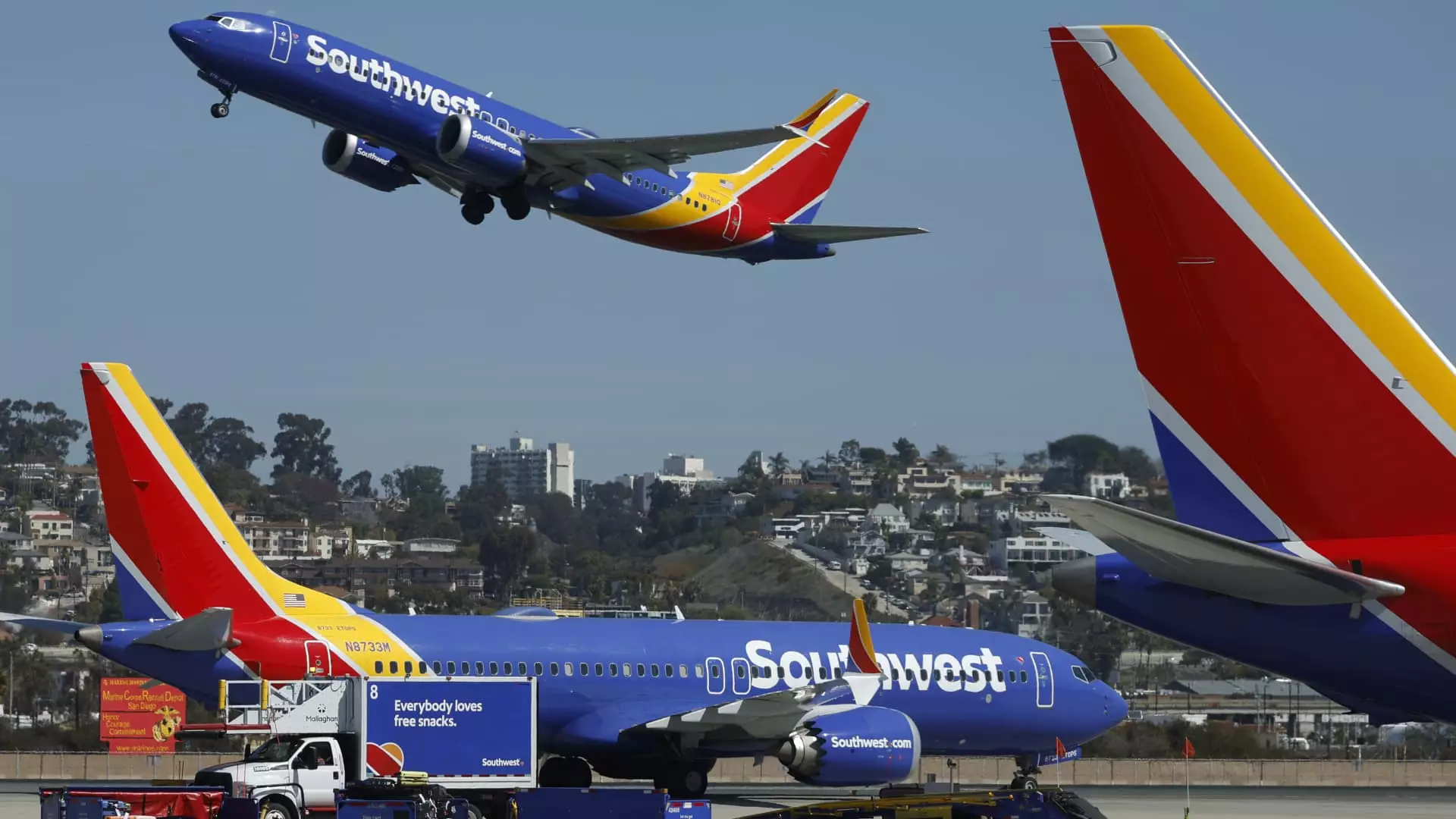In an age when customer expectations are ever-evolving, Southwest Airlines finds itself at a critical juncture. As CEO Bob Jordan recently noted, the airline is teasing significant changes designed to attract high-spending customers. The introduction of airport lounges, premium seating, and even the possibility of long-haul international flights paint a picture of an airline in transformation. However, the question arises: are these shifts a response to genuine consumer demand or merely reactive strategies to fend off soaring competition?
For decades, Southwest flourished under a unique business model characterized by low fares, no-frills service, and an emphasis on customer satisfaction. Yet, as competitors like Delta, United, and American Airlines capitalize on lucrative luxury markets, Jordan’s remarks suggest a growing awareness within Southwest of the necessity to adapt. The pressure to increase revenue, fueled by activist investors and plunging airfare, reveals an unsettling truth: the once-unassailable market position of Southwest is now facing formidable challenges.
The Battle for Customer Loyalty
Historically, Southwest distinguished itself from conventional airlines by forgoing premium offerings. However, times are changing, and with them, customer preferences. The airline’s recent foray into no-frills economy tickets and bag fees is a bold yet dangerous gamble. Although Jordan claims customers have remained loyal, this perspective feels overly optimistic. The very essence of customer loyalty can be precarious, especially when rivals are offering what consumers desire—luxurious experiences, personal space, and exclusive amenities.
Airports are no longer merely transit points; they have evolved into mini-destinations competitively vying for travelers’ attention. As travelers increasingly prioritize comfort and convenience, the absence of lounges and premium seating can push them toward competitors. Jordan’s acknowledgment that customers are left with no choice but to book elsewhere underscores an uncomfortable reality: Southwest risks losing its core audience if it continues to disregard emerging trends in luxury travel.
Nashville: A Case Study in Demand
The specific case of Nashville International Airport serves as a microcosm of this dilemma. With Southwest holding more than 50% market share, Jordan’s observation that local travelers yearn for premium options is telling. Nashville is not just a hub for music, but a burgeoning center for tourism, business, and culture. As customers increasingly look for an elevated travel experience—complete with lounges and comfortable seating—the question emerges: is Southwest equipped to meet these heightened expectations without betraying its foundational ethos?
Acknowledging customer desires without acting upon them opens a dangerous path of complacency. The risk is palpable: a shift towards luxury may alienate the loyal travelers who appreciate Southwest’s once-unique model. The airline needs to strike a delicate balance between innovation and tradition, a feat that proves difficult in a climate where differentiation is critical.
The Long-Haul Gamble
One of the more intriguing aspects of Jordan’s interview is the consideration of long-haul international flights—an uncharted territory for an airline that has relied primarily on domestic routes. While the potential for expansion into European markets presents an exciting opportunity, it also exposes Southwest to new risks. Jetting across the Atlantic would require significant investments in new aircraft and a strategic overhaul of operations that could challenge the very fabric of the Southwest identity.
Moreover, as noted, partnerships with airlines like Icelandair and China Airlines are mere stepping stones; they will not be enough to create a formidable presence in long-haul markets. A direct flight from Dallas to London would require a rethinking of logistics, pricing strategies, and service expectations, all of which demand a revamp of Southwest’s operational philosophy.
The Road Ahead: Navigating Uncertainties
Despite the enticing elements of Jordan’s vision, the reality is laced with uncertainties. The need for modernization must not overshadow the airline’s storied legacy built on low costs and customer convenience. The juxtaposition of chasing affluent clientele against the backdrop of economic turmoil poses a dual threat: Southwest could either lose its core identity or fail to penetrate the lucrative luxury travel sector adequately.
The presence of the Boeing 737 Max 7 in their fleet, coupled with regulatory hurdles and inconsistent deliveries, further complicates matters. Even as Southwest looks down the road, the immediate outlook suggests caution is paramount. As competitors assert their dominance in more lucrative markets, the airline must remain vigilant, adapting smartly rather than impulsively, lest it inadvertently be outflanked by those willing to change faster.
In this rapidly shifting landscape, only time will tell whether Southwest Airlines’ ambitious plans to evolve resonate with passengers, or if they lead to the company’s dilution, jeopardizing its hard-won reputation in the highly competitive airline sector.

Leave a Reply